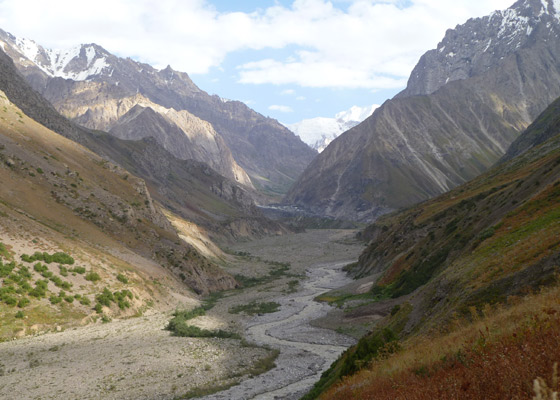Tajikistan gets its first natural World Heritage Site
Phnom Penh, Cambodia, 21 June 2013 (IUCN) -- Tajik National Park became Tajikistan’s first natural World Heritage site. The decision was taken today by the World Heritage Committee, following the expert recommendation of IUCN.

Photo: IUCN/Les Molloy
Situated in the East Pamirs, Tajik National Park is a vast area – 18% of the country – protecting almost the entire Pamir mountain range. It was added to the list of world’s most precious places because of its spectacularly varied landscapes including stark deserts, massive alpine lakes and extensive glacial fields.
“Adding Tajik National Park is a conservation success story," says Tim Badman, Director of IUCN’s World Heritage Programme. “Tajikistan has provided an outstanding example of how to effectively use the World Heritage Convention. A smaller area of Tajik National Park was originally nominated in 2009. Subsequent advice from IUCN and others resulted in a significantly improved nomination successfully brought back to the World Heritage Committee in 2013.”
The combination of some of the deepest gorges in the world, surrounded by rugged glaciated peaks, as well as the alpine desert and lakes of the Pamir high plateaux adds up to an alpine wilderness of exceptional natural beauty. The Park contains contains 170 named rivers and over 400 lakes, as well as the world’s longest glacier outside of the Polar Regions, the Fedchenko Glacier, which is 77km long. It is home to the brown bear, snow leopard, Marco Polo sheep, Siberian ibex, Indian goose and many endemic fish.
Tajik National Park encompasses almost the entire Pamir Mountains, the third highest mountain ecosystem in the world after the Himalaya and Karakorum Mountains. The Pamir Mountains lie at the centre of the ‘Pamir Knot’, the term used by geographers to describe the tangle of the highest mountain ranges on the Eurasian continent.
IUCN is the advisory body to UNESCO’s World Heritage Committee on nature. Working closely with the World Commission on Protected Areas (WCPA), IUCN’s World Heritage Programme evaluates sites nominated to the World Heritage List, monitors the conservation state of listed sites, promotes the Convention as a leading global conservation tool, and provides support, advice and training to site managers, governments, scientists and local communities.
The following natural sites were recommended by IUCN for inscription on the World Heritage List this year, alongside Tajik National Park: Namib Sand Sea in Namibia and Xinjiang Tianshan in China, both of which were also adopted earlier today, as well as the extension of Mount Kenya National Park to include the Lewa Wildlife Conservancy and Ngare Ngare Forest Reserve; Mount Etna in Sicily, Italy and El Pinacate and Grando Desierto de Altar Biosphere Reserve in Mexico, which await decision.
www.iucn.org/worldheritage



